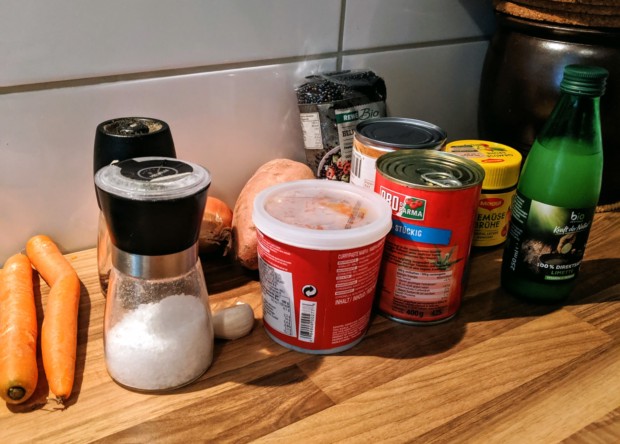Published:
Servings: 2-3 Servings
,
Prep Time:
Ingredients
-
1 Onion
-
1 Garlic
-
1 cm fresh ginger root
-
1 Carrot
-
3 table spoons Coconut oil
-
1,5 table spoons red curry paste
-
300 g Beluga lentils
-
1 can tomatos (chunky or whole)
-
1 can Coconut milk
-
550 ml vegetable stock
-
1 sweet potato
-
2 table spoons lime juice
-
Salt and pepper
Instructions
Origin: https://www.rewe.de/rezepte/veganes-beluga-linsen-curry/

- Peel and chop the onions, garlic, ginger root and carrots.
- Fry for 2 minutes. Add curry and lentils and fry for a short time
- Add Tomatos, coconut milk and 200 ml vegetable stock.
- Cook for 10 minutes and peel the sweet potato
- Add sweet potato and cook for 20 minutes. Add vegetable stock periodically
- Add lime juice. Season with salt and pepper.






